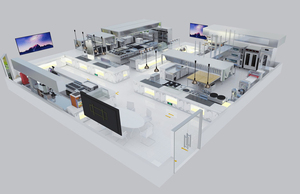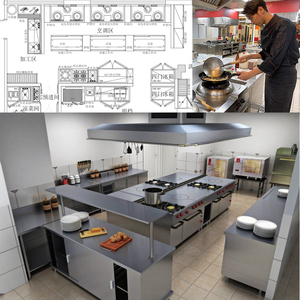(18806 products available)


























































































































































































































Commercial grill plates are essential appliances in various businesses, such as restaurants, bars, and catering services. They are designed to meet high demands in the food service industry. These grill plates provide a large cooking surface for grilling meat, vegetables, and other food items. Below are some notable types:
Casting Iron Grill Plates
Known for their heat retention and distribution capabilities, cast iron grill plates ensure consistent cooking results. These plates are durable and ideal for searing steaks, burgers, and marks on other grill foods.
Stainless Steel Grill Plates
Unlike others, the stainless steel commercial grill plates are rust-resistant and easy to clean. They can withstand corrosive substances, so they are best for outdoor grilling. These plates are lighter in weight and offer good cooking performance.
Non-Stick Grill Plates
Designed with a non-stick surface, these grill plates ensure that food does not stick or tear when removed. They are easy to clean and maintain, making them ideal for commercial use. Most non-stick grill plates have a cast aluminum base with a non-stick coating.
Electric Grill Plates
Electric grill plates work with electricity, making them suitable for areas without a gas supply. They are designed with heating elements that provide direct heat to the cooking surface. Electric grill plates can be portable and more convenient for indoor grilling.
Gas Grill Plates
Gas grill plates are equipped with burners underneath and are ignited using a pilot flame. They are usually larger than electric grill plates and can cook for many people at once. Most gas grill plates have cast iron cooking grids that provide high heat for searing.
Charcoal Grill Plates
As the name implies, the charcoal grill plates use charcoal as a heat source. They give food a natural smoky flavor, catering to customers who prefer traditional cooking methods. These grill plates typically have adjustable vents for temperature control.
Modular Grill Plates
These are flexible cooking equipment designed to meet the varying needs of food businesses. With their modular structure, users can easily swap different cooking modules, such as griddles, fry tops, and barbecue grills. These plates are ideal for businesses that frequently change their menus.
Shape and Size:
Commercial grill plates come in different shapes and sizes to suit different cooking needs. They can be rectangular, round, or square-shaped grill plates, and their sizes can vary from small countertop grills to large built-in grills. For example, rectangular grill plates are great for cooking large quantities of food at once, while small grill plates are suitable for limited spaces or smaller food items.
Material:
Most commercial grill plates are made from cast iron, stainless steel, or a combination of both. Cast iron offers excellent heat retention and distribution, while stainless steel is more resistant to rust and corrosion. The material used in the design of the grill plate affects its durability, ease of cleaning, and overall cooking performance.
Cooking Surface:
The cooking surface of a commercial grill plate is designed to provide optimal grilling results. It usually has ridges or grooves that create grill marks on the food and allow excess fat or liquid to drain away. Some grill plates also have a smooth side, allowing users to cook various foods, including delicate items such as fish or pancakes.
Heat Source:
Commercial grill plates can use gas, electricity, or charcoal as a heat source. Gas grill plates have burners underneath connected to a gas supply, while electric grill plates have heating elements. Charcoal grill plates have a space for placing charcoal at the bottom. The choice of heat source affects the flavor, cooking speed, and temperature control of the grill plate.
Control Panel:
The control panel of a commercial grill plate allows users to adjust the cooking temperature and settings. It usually has knobs, buttons, or touch controls for easy operation. Some modern grill plates have digital displays that show the current cooking temperature.
Grease Management System:
One important aspect of the design of commercial grill plates is the grease management system. Grill plates are equipped with grease trays or drip pans that collect and hold excess grease and oil, preventing them from coming into contact with the food. This feature helps keep the cooking surface clean and reduces the risk of flare-ups, providing a safer and healthier grilling experience.
Safety Features:
Safety features are also an important part of the design of commercial grill plates. These may include flame failure devices, heat-resistant handles, and sturdy legs or wheels to ensure the stability and safety of the grill plate during use. Safety features protect users and reduce the risk of accidents or injuries.
Insulation:
Some commercial grill plates are equipped with insulation to improve energy efficiency and heat retention. Insulation helps maintain the desired cooking temperature while reducing heat loss, making the grill plate more efficient and cost-effective.
Aesthetics:
The appearance of the commercial grill plate is also a consideration in its design. Whether it is a sleek stainless steel finish or a classic cast iron look, the appearance of the grill plate can complement the overall style and decor of the kitchen or restaurant. Additionally, some grill plates may have decorative elements or customizable options to meet the specific needs of users.
Restaurants
Commercial grill plates are widely used in restaurants and other food service establishments. They are perfect for grilling meat, fish, poultry, and vegetables. This makes them ideal for restaurant menus that include barbecue dishes or grilled items. Grill plates enable chefs to prepare food quickly while maintaining consistent quality and taste.
Food Trucks
Food trucks often have limited space but need to cook various foods. Using a commercial grill plate allows food truck operators to make burgers, hot dogs, sandwiches, and even tacos on the spot. This versatility attracts customers who want freshly cooked street food from mobile kitchens.
Catering Services
Caterers must be able to cook large quantities of food for different events at different locations. With their large cooking surfaces, commercial grill plates are perfect for catering needs, where barbeque stations or grilled dishes are required during outdoor parties, weddings, conferences, etc.
Institutional Kitchens
Large institutions like schools, hospitals, and prisons serve mass meals every day. These institutional kitchens use commercial grill plates to cater to the demand for healthy grilled food options among their consumers. Grill plates allow uniform cooking, thereby ensuring safety standards are met while serving bulk quantities.
Buffet Restaurants
Buffet-style restaurants offer all-you-can-eat meals, so having a reliable cooking equipment source is essential. Commercial grill plates work well in this setup because they can handle high-volume grilling, which is necessary when many customers request grilled foods simultaneously.
Outdoor Cooking Events
Any outdoor cooking event, such as barbecue competitions, food festivals, or community cook-offs, will find commercial grill plates useful. Competitors and vendors alike can showcase their skills by serving perfectly charred meats and vegetables using these portable BBQ tools.
Choosing the right commercial grill for a restaurant is a crucial decision that can significantly impact its cooking efficiency, food quality, and overall customer satisfaction. With numerous options available in the market, each boasting various features and specifications, it can be challenging to determine which grill best suits the specific needs of a commercial kitchen. Therefore, several important factors must be considered to ensure an informed choice is made.
Determine the type of grill.
There are different types of commercial grills, including gas, charcoal, electric, and wood-fired grills. Each has advantages and disadvantages, so choosing the one that best fits the restaurant's needs is important.
Cooking surface area.
The grill plate should have enough cooking surface area to meet the restaurant's demand. For example, a larger cooking surface may be required for high-volume establishments or those serving many tables simultaneously. However, smaller grills may be more suitable for specialized menus with limited items.
Heat source and efficiency.
Commercial gas grills use natural gas or propane as fuel, while electric models rely on electricity. Among all, the charcoal ones use hardwood charcoal, and the wood-fired ones combine both wood and charcoal fuels. The gas-powered ones are usually more efficient than others. However, each model's heat source and efficiency should be considered, as it can affect cooking speeds and operating costs over time.
Durability and construction quality.
Considering the durability and construction quality of the grill plate is necessary, especially for commercial use, it must withstand frequent usage and large amounts of wear and tear over time. Therefore, it is recommended to choose those made from stainless steel or other strong materials that have been reinforced, which will ensure long-lastingness withstanding all types of damages caused by heavy-duty usages.
Safety features.
Safety features such as flame tamers, grease containment systems, and temperature control mechanisms are also important considerations. These features help prevent accidents and ensure safe operation within the commercial kitchen environment.
Ease of cleaning and maintenance.
The ease of cleaning and maintenance is another factor that should be taken into account when choosing a commercial grill plate. A good grill should have removable grease trays, adjustable burners, and smooth surfaces that can be easily accessed for cleaning purposes. This will reduce the time spent on maintenance work, thus increasing productivity.
Q1: What are the benefits of using a commercial grill plate?
A1: The benefits of using a commercial grill plate include improved cooking efficiency, enhanced flavor, better temperature control, and increased durability.
Q2: How can commercial grill plates improve cooking efficiency?
A2: Grill plates can distribute heat evenly across their cooking surface, allowing for consistent and efficient cooking.
Q3: How should a commercial BBQ grill plate be cleaned?
A3: Before cleaning a commercial BBQ grill plate, users must ensure that they have switched off the device and allowed it to cool down sufficiently. Thereafter, they should scrape off any food particles or residue using a grill scraper or brush. Finally, they must rinse the grill plate with clean water and wipe it dry using a cloth.
Q4: What types of foods can be cooked on a commercial grill plate?
A4: Various foods can be cooked on a commercial grill plate, including burgers, steaks, vegetables, seafood, chicken, and sandwiches.
Q5: What factors should be considered when buying a commercial grill plate?
A5: Some of the factors that people should consider when buying a commercial grill plate for their business are size, material, heat source, cooking surface, and ease of cleaning.
The web search volume for the keyword "commercial grill plate" shows a consistent average monthly web search volume of 10, with no significant changes in the past year as evidenced by a 0% three-month and one-year change. This stability is also reflected in the monthly web searches which remained at 10 for most months, with a brief spike in March 2024 to 20 web searches.
Analyzing the search pattern for "commercial grill plate," it's evident that interest in this keyword is relatively steady, with minimal fluctuations. The spike in March could suggest a seasonal interest possibly tied to increased commercial kitchen activities or equipment upgrades at the start of the year. However, the rapid return to the baseline web search volume indicates that this was a short-lived variation.
The lack of significant year-over-year growth or decline in web searches for "commercial grill plate" underscores a stable market demand. This could imply that the product is well-established within its industry and has reached a maturity stage where web search volumes reflect a settled market need rather than growing or declining interest. The data points to a niche, yet consistent demand for this commercial kitchen equipment, without substantial shifts in consumer interest or market dynamics over the observed period.